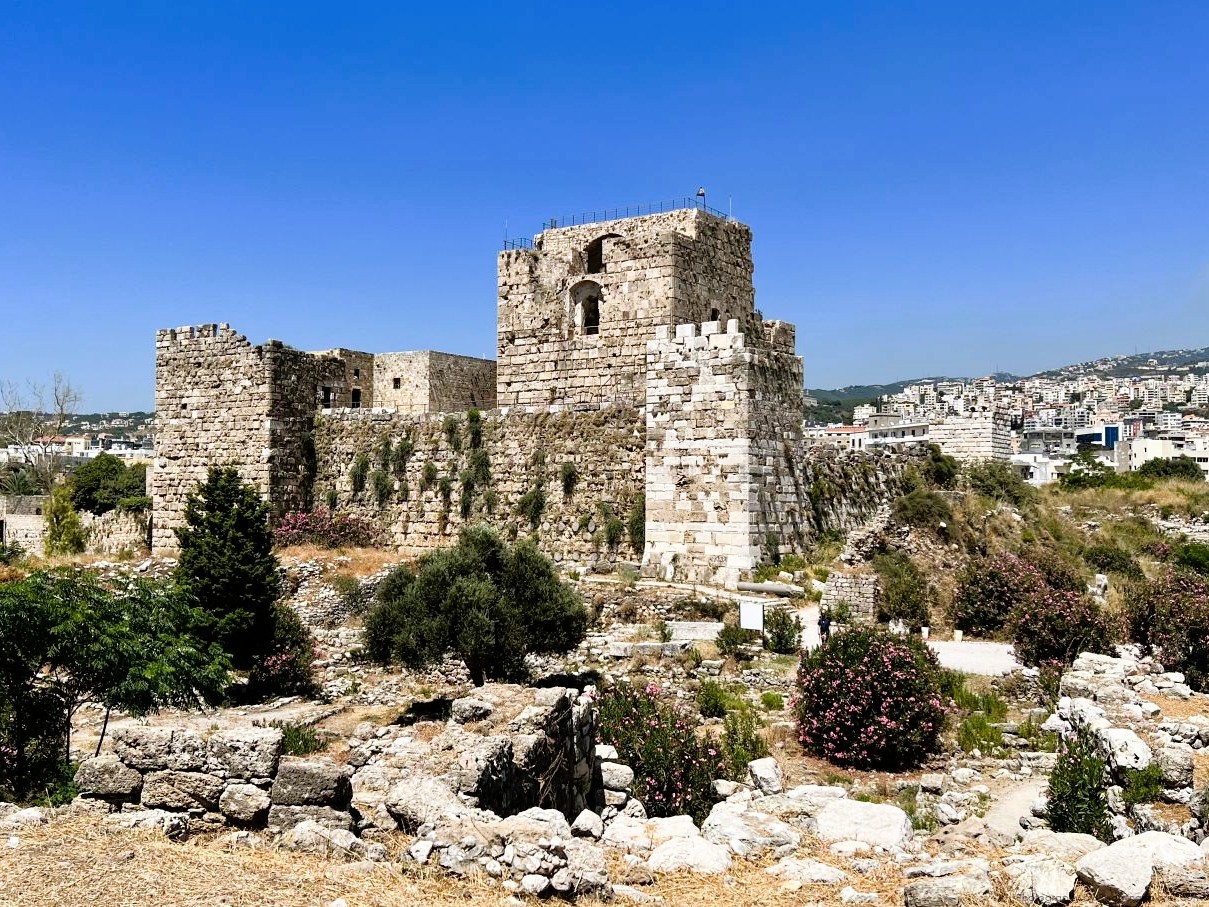Uncover the ancient wonders of Byblos Citadel in Lebanon, a historic fortress overlooking the Mediterranean that has witnessed millennia of civilizations. Discover its rich history, breathtaking views, and timeless charm, making it an unmissable destination for cultural explorers.
Byblos Citadel Stepping into the Cradle of Civilization
Byblos, a UNESCO World Heritage Site, is one of the oldest continuously inhabited cities in the world, with a history dating back over 7,000 years. At its heart stands the majestic Byblos Citadel, a fortress whose stones echo the stories of the Phoenicians, Crusaders, Romans, and more. On my recent visit to this awe-inspiring site, I walked through layers of history, surrounded by panoramic views and the deep blue Mediterranean Sea. In this article, I’ll take you through the highlights of my journey to this ancient citadel and offer tips to make the most of your visit.
A Crossroads of Ancient Civilizations
Long before the Crusaders built the citadel, Byblos had already established itself as a major cultural and economic hub in the ancient world. The city’s origins can be traced back to the Neolithic period, but it rose to prominence during the Bronze Age, around 3000 BCE, as one of the principal cities of the Phoenicians, an ancient maritime people known for their prowess in seafaring, trade, and the invention of the alphabet.
During its peak, Byblos was a key trading center linking Egypt, Mesopotamia, and the Mediterranean world. The city’s strategic coastal location allowed it to flourish as a hub for exporting cedarwood, a highly prized resource used for shipbuilding and construction, particularly in Egypt. The Phoenicians’ ships, laden with cedar, papyrus, and other goods, sailed across the seas, making Byblos an indispensable part of ancient commerce.
The significance of Byblos also lies in its religious importance. The city was considered sacred to the Egyptian goddess Hathor, and later to the Phoenician goddess Baalat Gebal. Temples dedicated to these deities were constructed here, and the city became a spiritual center as well as a commercial one. These sacred sites drew people from across the region, seeking blessings for their voyages and trade.






A Testament to Crusader Architecture
The Byblos Citadel itself was built during the 12th century by the Crusaders, who sought to protect their newly acquired territories from both internal and external threats. Constructed atop earlier fortifications, the citadel’s strategic position on a hill overlooking the Mediterranean Sea allowed it to function as both a military fortress and a symbol of Crusader dominance in the region. Its thick limestone walls and imposing towers reflect the architectural style typical of Crusader fortifications, designed for both defense and control.
However, the citadel was not only a defensive structure. Inside its fortified walls, there was a bustling life. The Crusaders established a small community here, with soldiers, merchants, and craftsmen living within the citadel’s confines. These inhabitants were a mix of European settlers and locals, creating a unique blend of cultures. The Europeans brought their traditions and customs, but over time, they adapted to the local way of life, blending Christian and Levantine influences.
During my visit, I imagined what life would have been like inside the citadel’s walls during its heyday. The Crusaders would have maintained a strict military order, with knights and soldiers standing guard atop the towers, while local merchants and craftsmen conducted business in the lower quarters. The bustling markets, religious services, and daily activities within the citadel created a microcosm of the region’s broader cultural exchange.
A City in Transition
Byblos’ cultural and economic significance during the Crusader period was reflective of its earlier prosperity. While the citadel served as a military fortress, the city surrounding it continued to thrive as a trading center. The Crusaders maintained the Phoenician tradition of seafaring and trade, facilitating commerce with Europe and the Byzantine Empire. Goods such as textiles, spices, and metals flowed through Byblos, making it a wealthy and cosmopolitan city.
The people who lived in Byblos during the Crusader era were diverse. Alongside the Crusaders themselves, the city was home to native Lebanese, Syrians, Armenians, and Greeks, as well as pilgrims and traders from across Europe and the Middle East. This blend of cultures fostered a unique atmosphere in the city, where European knights and Middle Eastern merchants mingled, sharing knowledge, customs, and goods.
Religiously, Byblos remained a significant site for both Christians and local populations. The Crusaders constructed churches alongside the ancient temples, and religious life was central to the city’s identity. The local economy was also supported by the influx of pilgrims who came to worship at these holy sites, further boosting the city’s wealth.






Immersing in the Atmosphere: Sensory Experiences at Byblos Citadel
The sensory experience at Byblos Citadel is one of its most captivating aspects. As I stood atop the walls, I felt the cool breeze from the Mediterranean and gazed at the azure waters stretching to the horizon. The views from the citadel are truly spectacular—on one side, the bustling modern town of Byblos, and on the other, the endless sea. The sound of waves crashing against the nearby harbor added to the ambiance, creating a serene yet dramatic backdrop.
Inside the citadel, the faint scent of aged stone mixed with the earthy aroma of the surrounding gardens. Birds flitted around the ancient walls, their songs blending with the echoes of footsteps on the time-worn paths. These sensory details made my visit feel more intimate, as though I was experiencing the citadel not only through its history but through the very atmosphere that has surrounded it for centuries.
More Than Just a Fortress
While Byblos Citadel is undoubtedly the centerpiece of the town, the surrounding area offers even more to explore. After immersing myself in the citadel’s history, I wandered through the adjacent archaeological site, where I encountered ruins from various periods, including Phoenician temples, Roman theaters, and ancient tombs. These remnants of past civilizations enhanced my understanding of Byblos as a crossroads of cultures.
The old souk, located just a short walk from the citadel, is a delightful place to stroll after your visit. As I meandered through its narrow alleys, I found a mix of artisanal shops, traditional Lebanese restaurants, and vibrant cafés. The scents of freshly brewed coffee and spiced dishes filled the air, offering a welcome contrast to the historical gravity of the citadel.



A Window into Lebanon’s Past and Present
What struck me most during my visit to Byblos Citadel was how seamlessly the ancient and modern worlds coexist here. While the citadel transports you back to a time of knights and ancient civilizations, the lively town of Byblos just outside the walls is brimming with contemporary energy. This blend of old and new is what makes Byblos Citadel such a remarkable place to visit.
I recommend spending at least half a day here, allowing time to soak in the history and explore the surrounding attractions. Whether you’re a history buff or simply someone looking for a stunning spot to appreciate Lebanon’s culture, Byblos Citadel will not disappoint.
Tips for Visiting Byblos Citadel
- Best time to visit: Spring and autumn are ideal, as the weather is mild and pleasant. Visiting in the late afternoon allows you to catch the golden hour and watch the sunset over the Mediterranean.
- Getting there: Byblos is about 40 km north of Beirut, making it an easy day trip by car or bus. Alternatively, many guided tours include Byblos as part of a broader itinerary exploring Lebanon’s coastal sites.
- Wear comfortable shoes: The citadel’s stone steps and pathways can be uneven, so be prepared for a bit of walking and climbing.
- Combine your visit with other sites: After touring the citadel, explore Byblos’ archaeological site, old town, and harbor for a more comprehensive experience of this ancient city.
Reflecting on a Journey Through Time
If you plan a trip to Lebanon, make sure Byblos Citadel is on your itinerary. It’s a destination that not only enriches your understanding of the past but also provides a peaceful escape from the modern world. It offers spectacular views and a connection to one of the oldest cities on Earth.
Visiting Byblos Citadel was like stepping into a time machine, where each stone, each vista, and each breath of salty sea air connected me to thousands of years of history. This is not just a fortress; it is a symbol of Lebanon’s resilience and a reminder of the many civilizations that have shaped its land. As I left the citadel, I carried with me a deep appreciation for the enduring legacy of Byblos and the stories it continues to tell.
More Information in Wikipedia
![]()

